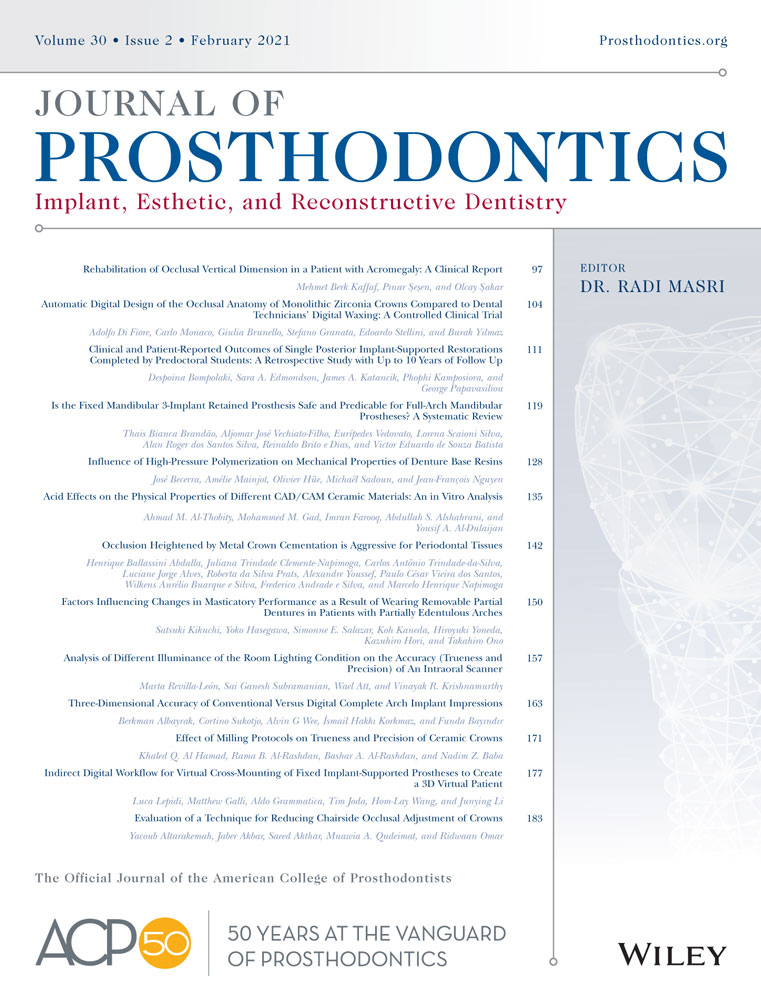Rehabilitation of Occlusal Vertical Dimension in a Patient with Acromegaly: A Clinical Report
Conflicts of interest: There are no conflicts of interest.
Abstract
Acromegaly is a rare acquired disorder caused by excessive growth hormone production. Dentists play an important role in the diagnosis of this disorder because of intraoral and extraoral symptoms such as extreme growth of the mandible, enlargement of the maxilla, diastema between teeth, a tendency toward malocclusion, a wide and thick nose, a marked malar bone, and thick lips. The prosthetic treatment of these patients is challenging because growth in the condyles and rami can lead to the development of a severe class III jaw relationship.
This case report describes the prosthetic treatment of a patient with acromegaly. A decreased occlusal vertical dimension and class III jaw relationship were determined by intraoral and extraoral examinations and cephalometric radiography. The occlusal vertical dimension was reestablished by increasing it approximately 10 mm, as per the esthetic and functional needs of the patient. Four years after treatment, the patient was functioning well, and neither occlusal disharmony nor temporomandibular disorder was observed.




